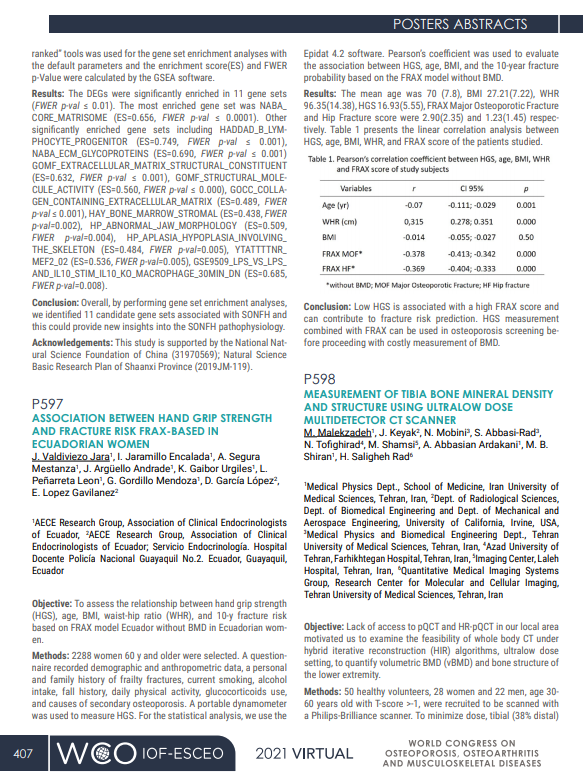Measurement of Tibia Bone Mineral Density and Structure using Ultralow Dose Multidetector CT Scanner
Abstract
In response to the limited availability of peripheral and high‑resolution peripheral quantitative CT (pQCT, HR‑pQCT) locally, we investigated whether whole‑body CT with hybrid iterative reconstruction (HIR) at ultralow dose could reliably quantify volumetric bone mineral density (vBMD) and macrostructure in the lower extremity. Fifty healthy volunteers (28 women, 22 men; age 30–60 years; T‑score >–1) underwent imaging on a Philips Brilliance scanner. Tibial (38% distal) vBMD was measured using both liquid (50, 100, 200 mg/cm³ K₂HPO₄) and solid (50, 100, 250 mg/cm³ CHA) calibration phantoms; a cross‑calibration equation (BMD_K₂HPO₄ = 1.34 × BMD_CHA + 13.43) was applied to harmonize results. Semi‑automated segmentation in MATLAB enabled assessment of cortical vBMD (1188 ± 29 mg/cm³ CHA; 1601 ± 40 mg/cm³ K₂HPO₄), cortical thickness (~5 mm), and bone macrostructure, all achieved at an effective dose of ~10 μSv (comparable to daily background radiation). The CHA‑based vBMD matched published pQCT values, demonstrating that advanced clinical CT with HIR can serve as a low‑dose alternative for peripheral bone assessment. Although improved image resolution and strict dose control are needed to enhance sensitivity and specificity for fracture risk prediction, our findings support further comparative studies of cortical vBMD derived from HIR‑enhanced QCT versus pQCT and HR‑pQCT in settings where these modalities are available.

